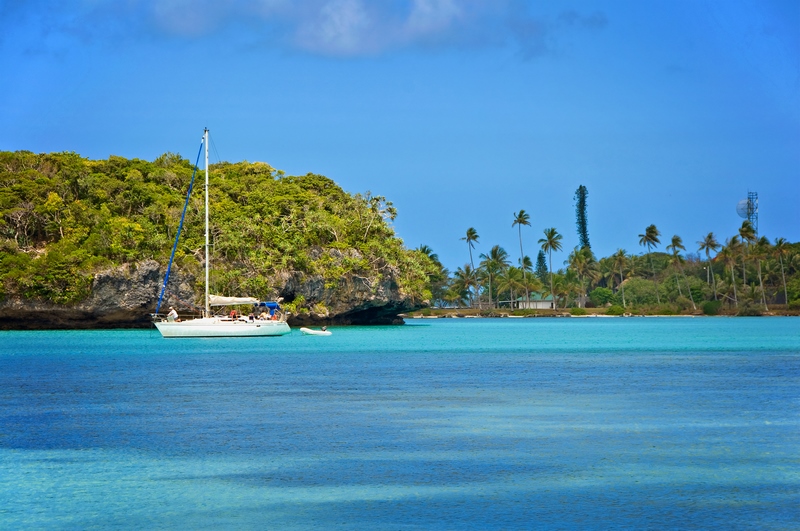Discover the Isle of Pines
Get out and explore the real New Caledonia!
If you want to get to know the real New Caledonia, there is nothing quite like a visit to the Isle of Pines. The small Pacific Island measures 13 kilometres by 15 kilometres and has a population of just 2,000 people. Given its current name by Captain James Cook in 1774, after the tall pine trees that cover the island, this is a haven of lush greenery—a true natural escape! The Isle of Pines is 100 kilometres from the mainland of New Caledonia (Grande Terre) and can be reached by domestic flight into the small airport.
A brief history
Melanesian people are thought to have lived on the Isle of Pines for nearly 2,500 years. It wasn’t until the Europeans arrived in the 1800s that the archipelago we now know as New Caledonia, or Nouvelle Caledonie, was formed. Annexed by the French in 1853, New Caledonia was first used by the Europeans as a penal colony. The ruins of the convict-built colony in the town of Ouro, on the Isle of Pines, can still be seen today. The Isle of Pines, or Ile Des Pins in French, is the furthest away French territory from France itself. In modern Europe, the Isle of Pines are perhaps best known for being the location of five seasons of the French version of the TV show, Survivor. Fun fact, though, the show was not actually set on there, but on a small island close by!
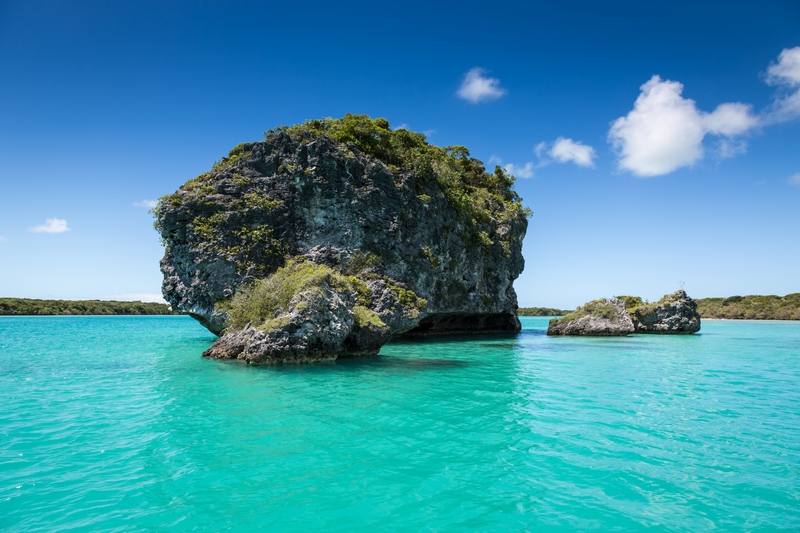
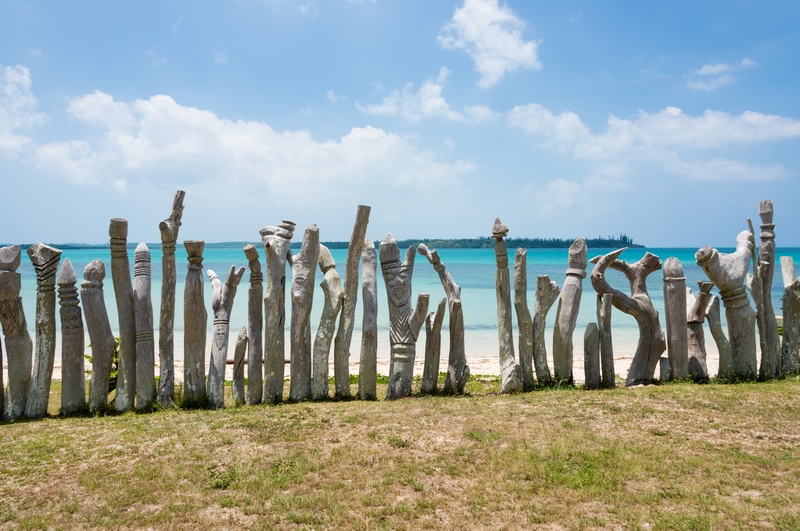
Culture and the Isle
New Caledonia’s culture is a fascinating mash up of ancient Melanesian culture, influences from the very early missionaries, the convicts sent over in the late 1800s and Europeans, mostly French, who have settled there since. The people of New Caledonia categorise themselves into two cultural groups, the Kanaks and the Caldoche. The Kanaks are of Melanesian heritage, while the Caldoche are of European heritage. While French is the official language, there are 28 Kanak languages spoken on the islands and many dialects of each language. Like many Pacific Island languages, the Kanak languages are only spoken, not written. History and knowledge is passed down through storytelling. The religious beliefs of New Caledonians are heavily influenced by the early missionaries and a large portion of the population in the modern day are Christian.
Why holiday here?
On an Isle of Pines holiday, there’ll be plenty to keep you occupied—from snorkelling to hiking, cycling to relaxing on the beach! The beaches on the Isle of Pines are perfect for swimming as the bays are protected from large swell by the New Caledonian Barrier Reef. The collection of coral reefs in New Caledonia is the second largest in the world, after our own Great Barrier Reef and, the Isle’s Oro Bay has some of the best beaches on for a dip to cool off. It is also home to the Natural Swimming Pool—a rocky basin filled with crystal-clear water and colourful reef fish. If you’re staying on the South West of the island, Kuto beach has amazingly clear water for a relaxing swim. Nearby Kanumera Bay is great for snorkelling.
To get the best view of the island, hike to the top of Pic Nga. Coming in at 260 metres above sea level, the summit of this climb gives fantastic views of the island’s flora, fauna, beaches and bright blue surrounding ocean. To get there, follow signs to the village of Orto. Once there you will see signs to Pic Nga. The hike is roughly a two-hour round trip.
Another great place to visit on the Isle of Pines is the Oumange Grotto. This huge imposing natural wonder is located on the north of the island and is known as the Cave of Queen Hortense. A local legend tells that this cave was the hiding place of a young tribe leaders daughter during a huge tribal conflict in the 1800s. She is a popular historical figure on the island, having been the first Melanesian to speak and write in French. Surviving the conflict, she later married the Grand Chief of the Islands and became the Queen.
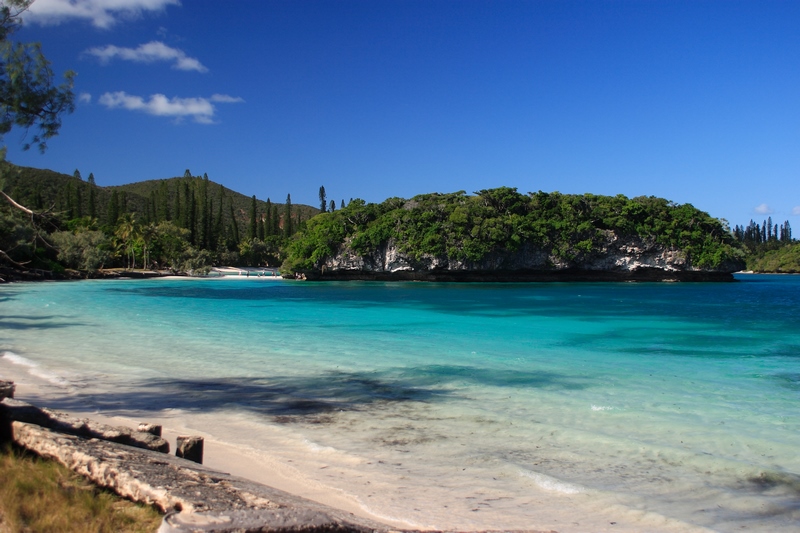
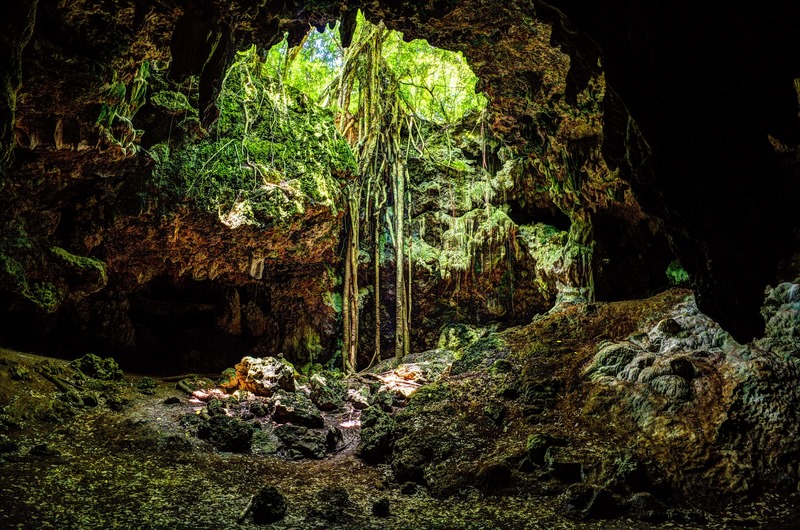
A quick note before you go…
When travelling to the Isle of Pines make sure to take Australian dollars in small notes or local currency (South Pacific Francs (XFP)). You will need this money to purchase things from the local markets and shops as there’s no guarantee that you’ll be able to withdraw money or pay on card!
By Sarah Tayler
Sarah is an avid traveller. When not writing for My New Caledonia she can be found gallivanting around the globe. Sarah has a soft spot for Barcelona because she’s a sucker for Gaudi and tapas! She’s also a big fan of leisurely river cruising and loves nothing more than stopping off along the banks of the Loire Valley for a spot of wine tasting, visiting Bordeaux for the history and amazing French food.
